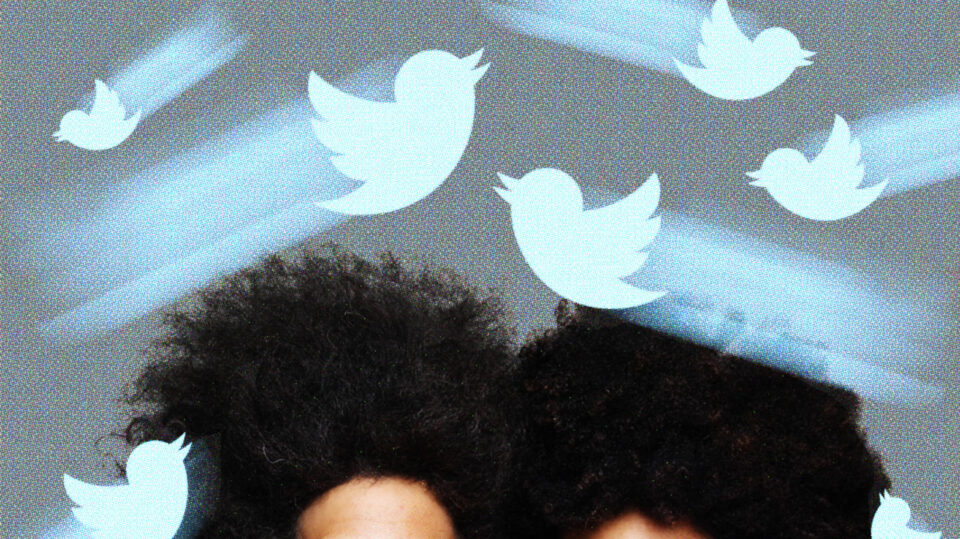Concerns: Racism Charges, Fear of Hate Speech
Jerry Lopes Dies, the Man Who Hired April Ryan
CNN+ Employees Count Down to April 30
DOJ Validates Reporting on Prison Outrages
‘Even the Careful and Cautious Can Get COVID-19’
J-Groups: Tie Pulitzers to Diversity Transparency
Olivia Benally to Succeed Arviso at Navajo Times
‘I Need People With Big Hearts to Help Me’
Nominate a J-Educator Who Promotes Diversity
Homepage photo credit: The Daily Beast
Updated April 27
Support Journal-isms
Concerns: Racism Charges, Fear of Hate Speech
“Elon Musk, the founder of a company that California is suing for allegedly silencing thousands of Black employees who complained about racism, is buying a company that has given millions of Black people a megaphone-like voice to complain about racism,” columnist Erika D. Smith wrote Monday in the Los Angeles Times.
“And the California-hating billionaire insists he’s doing it all to protect free speech.
“ ‘Twitter is the digital town square where matters vital to the future of humanity are debated,’ Musk said Monday, announcing that he had succeeded in taking over the San Francisco-based social media company for $44 billion.
“Consider this the beginning of the end of #BlackTwitter.
“Not of Black people on Twitter but of #BlackTwitter — the community of millions that figured out how to turn a nascent social media platform into an indispensable tool for real-world activism, political power and change.”
Think #BlackLivesMatter, #OscarsSoWhite, #ICantBreathe, #BlackGirlMagic, #SayHerName and more.
Smith wasn’t the only concerned Black journalist.
Under the headline, “Elon Musk Buying Twitter: 5 Reasons Why Black People Should Be Wary,” Bruce C.T. Wright wrote on NewsOne, “Musk’s main company, automaker Tesla, has been accused and sued by its workforce of and for racial discrimination for years now in a situation that has not been corrected.
“The implication for Twitter is that same administrative approach that prompted accusations of racism against Tesla will come to Twitter, which already has a disproportionately white workforce. At worst, that suspicion could become true as Musk — who has said he’s unsure what a ‘Karen’ is — allows racists like Marjorie Taylor Greene to not only regain access to their banned accounts but also resume spewing their white supremacy drivel.”
Smith also wrote, “We’ve already seen the effects of disinformation about COVID-19 vaccines and of QAnon, including the latest tall tales linking gender identity to pedophilia that are being echoed by reckless Republican politicians. What happens when those conspiracy theories, bolstered by more than a dash of white supremacy, escalate into violence? It happened once; it can surely happen again.
“On Monday, Musk tweeted: ‘I hope that even my worst critics remain on Twitter because that is what free speech means.’
“#BlackTwitter also knows that, no, that’s not what free speech means, because Twitter is a company — soon to be privately held — and has no obligation under the 1st Amendment to allow racism, transphobia, homophobia or misogyny to percolate through its platform.
“And so, rather than safeguarding the ‘bedrock of a functioning democracy,’ as Musk describes free speech, he just destroyed it — because the people whose tweets were the most effective at that are leaving. . . .”
- Juwan J. Holmes, The Grio: Elon Musk bought Twitter—what does it mean for Black Twitter?
- Marc Morial, National Urban League: [Letter opposing] Musk Proposal to Buy All Shares of Twitter Stock and Transition to Private Ownership
- Jason Parham, Wired: A People’s History of Black Twitter, Part I (July 15, 2021)
- Margot Roosevelt and Russ Mitchell, Los Angeles Times: Horrific allegations of racism prompt California lawsuit against Tesla (Feb. 11)
- Margot Roosevelt and Russ Mitchell, Los Angeles Times: Black Tesla employees describe a culture of racism: ‘I was at my breaking point’ (March 25)
- André Wheeler, The Guardian: Ten years of Black Twitter: a merciless watchdog for problematic behavior (Dec. 23, 2019; modified Jan 23, 2020)
Jerry Lopes Dies, the Man Who Hired April Ryan
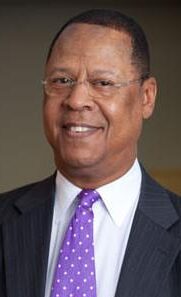 Jerry Lopes (pictured), whose American Urban Radio Networks questioned presidents, delivered old-school R&B and talk, and championed battles for Black influence and against AIDS, died Saturday.
Jerry Lopes (pictured), whose American Urban Radio Networks questioned presidents, delivered old-school R&B and talk, and championed battles for Black influence and against AIDS, died Saturday.
Lopes (rhymes with “hopes”) suffered a heart attack at his Pittsburgh home, according to his fiancee, Marcia Martin. He was 72.
For years, American Urban Radio Networks has called itself the nation’s only African American-owned and –controlled radio network. Lopes was president of program operations and affiliations, and often was the public face of the network.
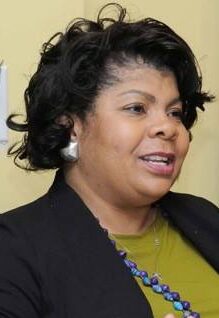 He hired April Ryan (pictured) to cover the White House. This year, working at theGrio, Ryan is celebrating her 25th year and is the longest-serving Black woman to cover the beat.
He hired April Ryan (pictured) to cover the White House. This year, working at theGrio, Ryan is celebrating her 25th year and is the longest-serving Black woman to cover the beat.
Lopes brought in Bob Ellison, who became the first Black board member of the White House Correspondents’ Association. He sat with pride when Ellison, as president in 1990-91, presided over its annual correspondents’ dinner.
“Jerry was the consummate professional,” Brian Cook, president of the Pittsburgh Black Media Federation, told Journal-isms. “His wisdom and knowledge about the radio industry were unmatched. He showed many industry professionals how to stimulate the minds of audiences by telling compelling stories through news/sports/information and the short and long-form radio programs at the American Urban Radio Networks.
“Even through an ever-changing industry, Lopes knew how to adjust to the times while keeping the fundamentals of radio, and he applied that to the present day.” Cook was a 14-year employee at the American Urban Radio Networks.
Continued on The Grio (Added April 27)
- Radio Ink: Former AURN Executive Passes (April 28)
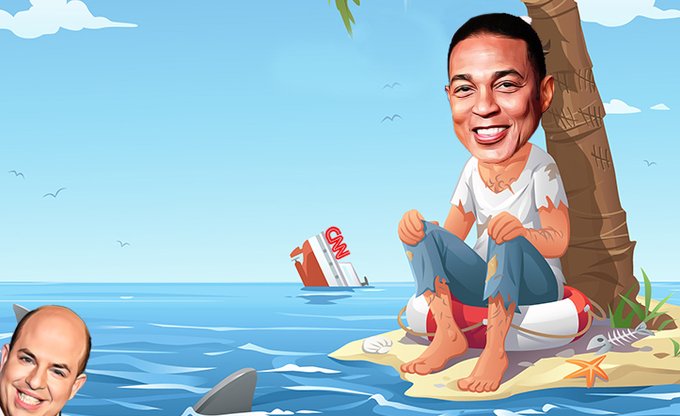
CNN+ Employees Count Down to April 30
- Update: CNN+ is shutting down two days earlier than it first said (Phil Nickinson, Digital Trends)
Javier de Diego, executive producer of the new “Who’s Talking to Chris Wallace,” “bristled at the sense of joy that some had over the demise of CNN+, led by former President Donald Trump, who issued a mocking statement,” Ted Johnson wrote Friday for Deadline.
“Adding to an already awful day: People on here celebrating the demise of a project hundreds worked hard to accomplish, and praising their potential unemployment,” de Diego wrote. “Seemingly for political reasons. Can people be human for once? Have some empathy.”
Johnson continued, “In fact, hundreds could lose their jobs with the axing of CNN+, particularly as Warner Bros Discovery moves to post-merger cost-cutting mode. The abrupt way that the closure was handled, with some learning via news alerts, also has left some talent demoralized.”
As the April 30 termination date for CNN+ approaches, for most affected, the prevailing condition is uncertainty.
A few well-known journalists of color were among them. Some have other options within the company.
Johnson noted that when Audie Cornish, who had yet to launch her show, moved from NPR, “it also was announced that she would appear on CNN covering breaking news and on a new podcast. . . .”
On Twitter Monday, Cornish pleaded for help for her colleagues: “This week I would love to hear from folks who have open producer jobs. I have a wonderful talented @CNNPlus team. They deserve a chance to show the world more of what they can do! #journalismjobs.”
Cornish followed up later Monday with, “Thanks to all for your replies today. many opportunities popping up in the tl in audio and video! much appreciated.”
Jemele Hill, set to co-host a show with Cari Champion starting next month, joined de Diego asking for empathy. Hill wrote on Twitter, ‘Some of y’all are going to try to get jokes off at my expense but I’m going to be fine — it’s called a contract, learn about it. But there are people who are part of our show staff who do not have the same protection. Good people will be out of work. But go off tho.’ ”
Alex Weprin reported Thursday for the Hollywood Reporter, “current CNN talent like Jake Tapper, Wolf Blitzer, Anderson Cooper and Don Lemon signed on to host streaming shows, including a parenting show for Cooper, and a talk show for Lemon. What happens to all of those programs remains uncertain, and with the talent under contract, it may take some time to iron it out.” Lemon’s weekly show had just debuted.
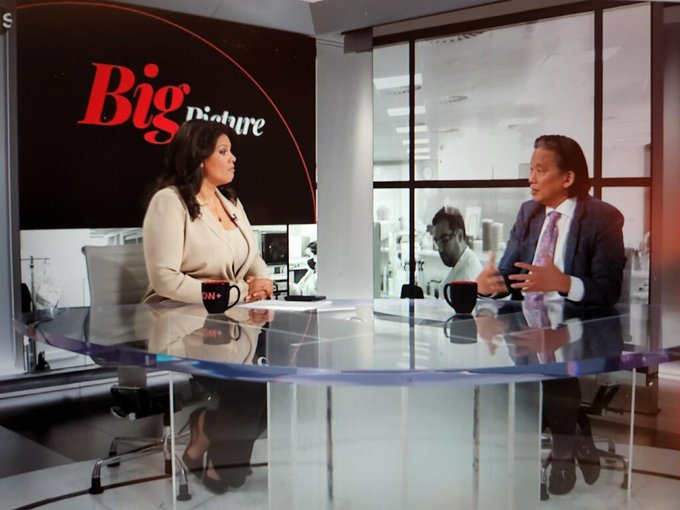
Sara Sidner, senior national and international correspondent, began hosting “The Big Picture,” “an in-depth contextual look at the most important and interesting story of the day.” Sidner has been based in Los Angeles, Jerusalem, Abu Dhabi and New Delhi, and led CNN’s coverage in Minneapolis of the protests following the death of George Floyd and the trial of Derek Chauvin.
The National Association of Hispanic Journalists said on March 2 it was “appalled by the lack of Latino journalists in the CNN+ lineup. This lack of representation is not only disrespectful to our diverse community, but also disregards the well-qualified Latino talent pool within the organization.”
However, the release was soon removed. CNN pointed out that Eva Longoria had signed on for a Mexico-based travel show and said, “We continue to have discussions with journalists across the industry around opportunities at CNN+ and look forward to announcing more diverse shows, talent and content offerings soon.”
In all, Sara Fischer reported Friday for Axios, “About 350 of the 700 people that work for CNN+ will be laid off with pay and benefits for the next 90 days. After that, any employee that doesn’t find a new role with the network will be granted at least six months’ severance.
“Backend talent, including engineers and designers, will be able to apply for the hundreds of backend roles supporting the streaming efforts at the newly-combined company. Morale at CNN is low. A Discovery executive referring to CNN+ as “CNN minus” particularly rubbed people the wrong way, a source told Axios.
“Deals are still being negotiated for top talent. Top anchors and show hosts will need to negotiate new roles at the network, either on the TV side or digital, if they wish to say.”
As the New York Times reported Sunday, “The near-instant collapse of CNN+ amounted to one of the most spectacular media failures in years, a $300 million experiment that ended abruptly with layoffs in the offing and careers in disarray. The corporate tug of war over its fate exposed deep philosophical divides about the future of digital media, as executives struggle to navigate a rapidly changing marketplace where technology and consumer habits shift day to day.
The service’s planned shutdown on Saturday follows a launch that took place just on March 29.
The shutdown “deprived the cable news pioneer — and the TV news industry as a whole — of the opportunity to figure out what the future of television news might look like,” Stephanie Hughes wrote Friday for Marketplace.
“This week, futurist Amy Webb felt like she’d been transported back to 1996. ‘This moment in time reminds me a little bit of the early days of the internet, when newspapers grappled with whether or not to erect a paywall,’ she said.https://www.marketplace.org/2022/04/22/the-demise-of-cnn-is-a-missed-opportunity-for-the-future-of-video-news/
Veterans of other failed streaming attempts, such as former Washington Post reporter Wesley Lowery, had their own thoughts.
Lowery tweeted Thursday, “feel horrible for the CNN+ folks, especially for the producers and behind the scenes folks who will be hit the hardest. as a veteran of two failed attempts at a news for streaming (quibi and paramount+), I obviously don’t have the answers but do have a few thoughts . . . my macro take here is that the biggest problem in American media is that as a capitalistic enterprise it requires the people through their consumption choices and wallets to resource quality journalism — which, in aggregate, they do not. we have the media we democratically choose.”
Inmates at Parchman Farm posted this video pleading for help, distributed by the African Diaspora News Channel. (Credit: YouTube)
DOJ Validates Reporting on Prison Outrages
“Justice Department officials said Wednesday that conditions at the State Penitentiary at Parchman violate the Constitution,” Jerry Mitchell reported for his Mississippi Center for Investigative Reporting.
“ ‘Our investigation uncovered evidence of systemic violations that have generated a violent and unsafe environment for people incarcerated at Parchman,’ said Assistant Attorney General Kristen Clarke. ‘We are committed to taking action that will ensure the safety of all people held at Parchman and other state prison facilities.’
“The department began investigating Parchman in February 2020 after MCIR and ProPublica reported on the increases in grisly violence, gang control and subhuman living conditions, noting that lawmakers had known about these issues for years and had done little to fix the prison.
“In one example, a cellphone video appeared to show a fight at Parchman. Prisoners can be heard egging on the violence. Prison officials declined to authenticate the video, but several inmates said it matched details of the facility. Prison authorities later reported that a man was killed at about the same time the video was circulating on social media.
“ ‘I’ve got him in a chokehold,’ one inmate boasts.
“Another inmate cheers him on: ‘Oh, yeah, oh, yeah. Dead. Oh, yeah. Dead. Deaaaaad.’
“After that reporting, U.S. Rep. Bennie Thompson, D-Miss., and others called on the Justice Department to investigate. . . .”
- Lici Beveridge, Clarion Ledger, Jackson, Miss.: Mississippi prison crisis: Federal officials say state violates Parchman inmates’ rights
Dr. Cameron Webb of the White House COVID-19 Response Team, shown here visiting COVID-19 vaccination efforts in Norfolk, Va., was a White House point person last week on the issues of COVID masks and Earth Day. (Credit: YouTube)
‘Even the Careful and Cautious Can Get COVID-19’
“On a recent Saturday, I felt queasy and a bit disoriented,” columnist Will Sutton (pictured) wrote Friday for NOLA.com. “I started coughing. I got chills. I was fatigued. There was more, but it’s not fit for a nonmedical journal. I went to sleep early and couldn’t sleep through the night. I slept it off, getting up about 3 p.m. the next day.
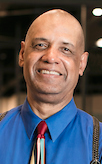 “I tested because I wanted to be sure I wouldn’t infect anyone by going to my first-ever New Orleans Pelicans game with friends that Sunday night. Negative. I was one of a few wearing a mask in all of the Smoothie King Arena.
“I tested because I wanted to be sure I wouldn’t infect anyone by going to my first-ever New Orleans Pelicans game with friends that Sunday night. Negative. I was one of a few wearing a mask in all of the Smoothie King Arena.
“I did an interview with The Prof and O.T. on the Good Morning Show at WBOK the next morning and went to the office. I was on campus at Loyola University New Orleans that Tuesday. Symptoms were better but still with me. We had a family birthday party planned that night. My doctor sister suggested that I test just to be safe. Positive. The party was off. We frantically started notifying people with whom I might have been in contact. I followed the virus protocol at The Advocate and Loyola, where I teach. I asked others to help me with contact tracing.
“Unfortunately, at least three people with whom I had been in touch got COVID-19. I don’t know that it was me for sure. I don’t know who gifted me with the virus.
“I bet it was when I slipped and wore a cloth mask or when I took down a KN95 mask to eat some red beans and rice at one event, or when I was eating charbroiled oysters at another. Each place I ate, I talked. And laughed.
“As much as I tried to avoid this, my experience is proof that even the careful and cautious can get COVID-19.
“I am relieved to know that I’m one of a few and not one of thousands suffering. I’m pleased to hear from Dr. Joe Kanter, the state health officer, and New Orleans Health Director Dr. Jennifer Avegno that my experience is not that unusual these days.
“These days don’t have the full force of the early days of the pandemic or the several surges we’ve had, but it is still dangerous. People are getting infected. People are asymptomatic and symptomatic. People are still dying. . . .”
Sutton, a former president of the National Association of Black Journalists, is not the only prominent journalist to contract the virus in recent days.
 Even the president of the NewsGuild, Jon Schleuss (pictured), a reporter at the Los Angeles Times, has been hit, though he says he was fully vaccinated. “The best thing we can do is think about each other and work to support and protect each other,” he tweeted on April 18. “Yes, have fun! But also be smart for yourself and for those around you. And I’m feeling cruddy, but will likely be fine because of the vaccine and booster. Now I’m going back to bed .)”
Even the president of the NewsGuild, Jon Schleuss (pictured), a reporter at the Los Angeles Times, has been hit, though he says he was fully vaccinated. “The best thing we can do is think about each other and work to support and protect each other,” he tweeted on April 18. “Yes, have fun! But also be smart for yourself and for those around you. And I’m feeling cruddy, but will likely be fine because of the vaccine and booster. Now I’m going back to bed .)”
Schleuss told Journal-isms on Monday that he was uncertain how he got the virus. “Hard to say for sure: the virus in DC was low (minus the Gridiron dinner) and I went to my first NHL game (was masked), took public transit and attended an outside and inside happy hour with labor folks.
“The friend I went to the NHL game with didn’t get sick and thankfully no one else I was hanging out with at the happy hours got sick — so it’s possible I got it another way. I ended up testing negative on Friday, then testing positive on Saturday the next day. I thought it all might be allergies.
“But after I tested positive, I let folks know, did my own contact tracing and isolated.”
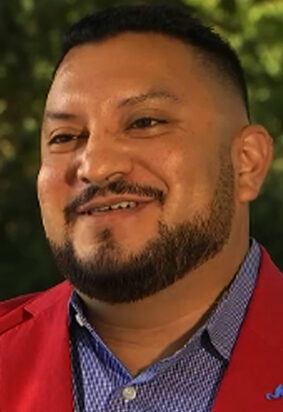 “Day 3. Lost seven pounds,” Brandon Benavides (pictured), a former president of the National Association of Hispanic Journalists, tweeted Friday. His Twitter feed shows him wearing a mask, and he had been a test subject for the Moderna vaccine trial in 2020.
“Day 3. Lost seven pounds,” Brandon Benavides (pictured), a former president of the National Association of Hispanic Journalists, tweeted Friday. His Twitter feed shows him wearing a mask, and he had been a test subject for the Moderna vaccine trial in 2020.
Benavides, a content producer at NBC-owned WRC-TV in Washington, had written Wednesday, “My doctor prescribed Paxloid. My symptoms are mild. Headache, body ache and the sh*ts. No fever.“
Benavides wrote Journal-isms on Monday, “My family came to visit me for Easter. I hosted a barbecue at my house. My mom, my brother, my cousin and her two daughters got covid. We are all vaccinated except the two kids. My brother was in town for a conference. He got sick first. My brother is recovered. My mom and I passed the hump.
“I finished the covid medicine yesterday. My doctor prescribed the new medication. I tested negative yesterday.”
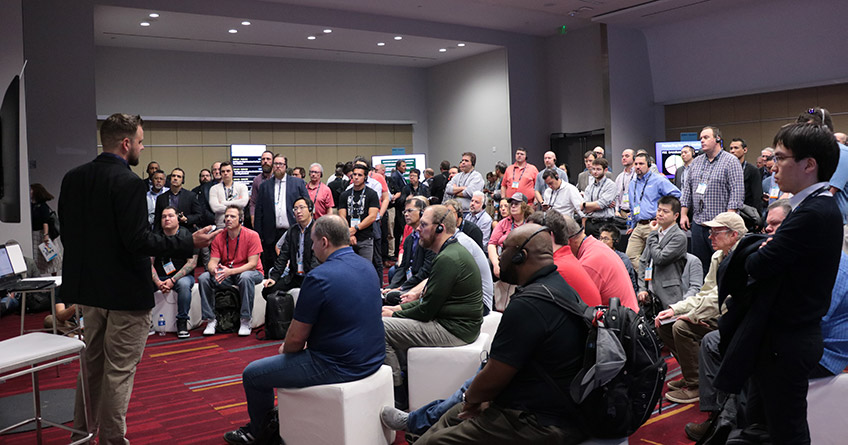
Journalism associations, for the most part, are resuming their in-person annual gatherings, with some, such as the News Leaders Association, offering a virtual option. The White House Correspondents’ Association, returning to its annual dinner Saturday after a two-year COVID hiatus, is taking precautions.
“Months ago, our board had in mind that we would approach this carefully, association president Steven Portnoy said Sunday on CNN’s “Reliable Sources.” “We decided months ago that we would have a blanket level of testing for all 2,620 guests at our dinner. Even before what happened at the Gridiron earlier this month, we decided that every person who came to our dinner would have to have two things, a ticket in one hand and proof that they have taken a same-day negative COVID test [in the] other.”
To register for the Aug. 3-7 joint convention in Las Vegas of the National Association of Black Journalists and National Association of Hispanic Journalists, registrants must provide proof that they have been vaccinated, according to the associations’ guidelines.
“NABJ and NAHJ may require additional protocols for entry to NABJ and NAHJ events. Registrants agree to abide by those requirements in place at the time. Registrants who do not comply with those protocols will be asked to leave or escorted from the events and will not receive refunds,” according to the website.
The National Association of Broadcasters trade show returned to Las Vegas on Saturday with a projected 55,000 attendees.
“Proof of full COVID-19 vaccination or a negative COVID-19 test are required for entry into the 2022 NAB Show,” which continues through Wednesday, the association said. Masks are recommended.
Separately, Derrick Z. Jackson wrote last month for the Union of Concerned Scientists that, as he summarized for Journal-isms, “Two years after COVID-19 began sweeping the nation, Black, Latino, and Indigenous people are still twice as likely to die if infected. During the Omicron wave, the hospitalization rate was four times higher for Black people than White people. And decisions keep getting made that ignore that reality and bow instead to the emotions of privileged and more protected white people to get back to normal.” In another development, on April 18, NABJ announced “the second year of a special program to support the legacy Black Press and its communities. Black-owned media outlets, NABJ members and others are invited to develop investigative, feature and enterprise stories or series and productions that focus on the impact COVID-19 is having on K-12 education. $300,000 is earmarked for this initiative in 2022.”
- Yasmeen Abutaleb, Washington Post: A tale of many pandemics: In year three, a matter of status and access
- Heather M. Butts, JD, MPH, MA, New York Amsterdam News: Preparing for the new wave of COVID
- Mike Damiano and Kay Lazar, Boston Globe: As Boston celebrates, new anxiety over COVID creeps in (April 16)
- Renée Graham, Boston Globe: The unmasking of a selfish nation
- Derrick Z. Jackson, Union of Concerned Scientists: Nearly One Million US Deaths from COVID-19: The Grim Consequences of Sidelining Science (March 25)
- Judy Kurtz, The Hill: White House correspondents’ dinner a go despite prominent COVID-19 cases
- Apoorva Mandavilli, New York Times: More than half of Americans have been infected with the coronavirus at least once, the C.D.C. says.
- Jason Laughlin and John Duchneskie, Philadelphia Inquirer: COVID has killed more than 5,000 Philadelphians. These neighborhoods lost the most. (April 11)
- Ben A. Pickman, SI.com: ESPN’s Stephen A. Smith Details COVID-19 Hospitalization Experience (Jan. 18)
- Roxanne Roberts, Washington Post: The elite D.C. social scene sees a rash of covid cases, but parties on (April 9)
- Judy Woodruff with Dr. Anthony Fauci, “PBS NewsHour”: Dr. Fauci on why the U.S. is ‘out of the pandemic phase’
J-Groups: Tie Pulitzers to Diversity Transparency
“A new open letter signed by dozens of professional journalism organizations, nonprofits, and labor unions asks the Pulitzer Prizes to add language requiring newsrooms to participate in the News Leaders Association’s annual diversity survey (or similar) by 2024 in order to be considered for their journalism awards,” Sarah Scire reported Friday for Nieman Lab.
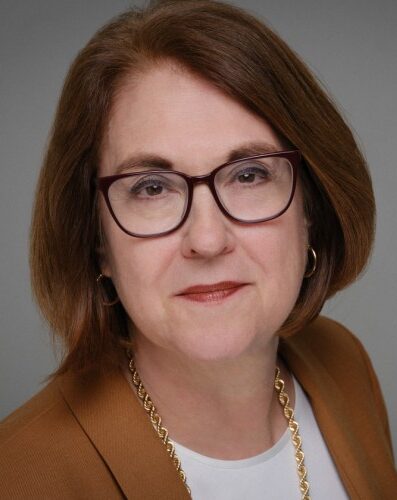 “The open letter cites reporting in Nieman Lab that though NLA sought responses from 2,500 news organizations for this year’s survey, just 303 newsrooms responded. The signees include professional organizations like Society of Professional Journalists, Asian American Journalists Association, National Association of Black Journalists, Native American Journalists Association, National Association of Hispanic Journalists, LION Publishers, and Institute for Nonprofit News — as well as a host of individual news organizations, including Vox and Spotlight PA.
“The open letter cites reporting in Nieman Lab that though NLA sought responses from 2,500 news organizations for this year’s survey, just 303 newsrooms responded. The signees include professional organizations like Society of Professional Journalists, Asian American Journalists Association, National Association of Black Journalists, Native American Journalists Association, National Association of Hispanic Journalists, LION Publishers, and Institute for Nonprofit News — as well as a host of individual news organizations, including Vox and Spotlight PA.
“The open letter, sent on Friday morning, was organized by Sisi Wei, co-executive director of OpenNews, and Jon Schleuss, president of The NewsGuild. (Marjorie Miller [pictured, above], who was named administrator of the Pulitzer Prizes last month, confirmed she’d received the emailed letter and said she supports diversity efforts in newsrooms, but has ‘not had time to study the letter or the survey or the NLA efforts in particular.’)
She has not responded to a request for comment from Journal-isms on Monday.
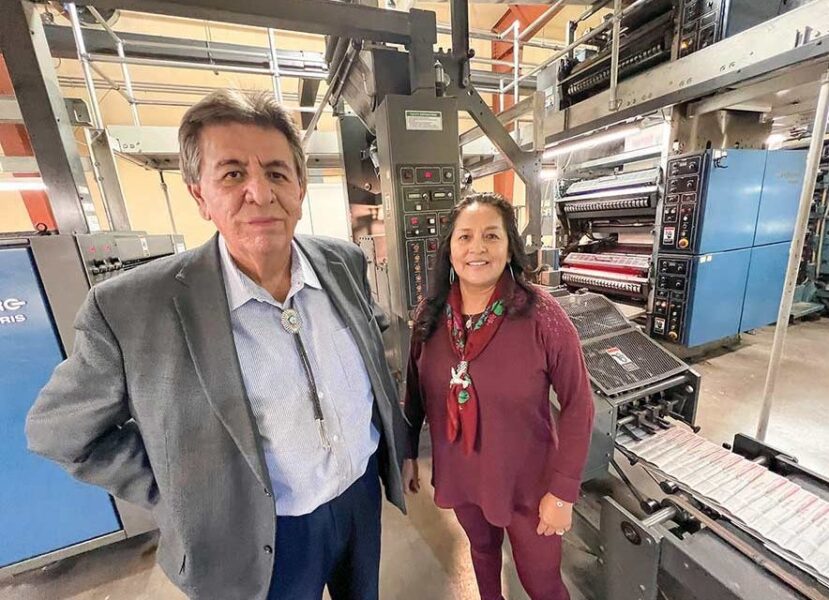
Olivia Benally to Succeed Arviso at Navajo Times
Olivia Benally, who for 20 years has worked on the business side of the Navajo Times, most recently as finance director, will become the new chief executive officer of the company, retiring CEO and Publisher Tommy Arviso Jr. told readers Thursday.
“Olivia will be the first Diné woman to serve as the leader of the Navajo Times. Since the Navajo Times first started as a newsletter back in 1959, a Navajo man or a non-Navajo male has always been the leader of the newspaper, Arviso wrote.
“That will change starting May 9 when Olivia officially begins her role as the CEO/publisher of the largest Native American owned and operated newspaper publishing company in the world.”
Arviso has been among the most well-known Native journalists, at one time the president of Unity: Journalists of Color, the now-disbanded coalition of Black, Hispanic, Asian American and Native American journalism associations. Arviso earned a place in journalism history when, in response to his efforts, the Navajo Nation Council in 2003 granted the weekly its independence from the tribal government. Elsewhere in Indian country, press freedom remains an issue.
Arviso said at the time that the tribal government wanted the paper as a mouthpiece, ”but as a an editor serving the largest Indian nation in the world, I have to stand up and say we’re not going to be sheep.”
I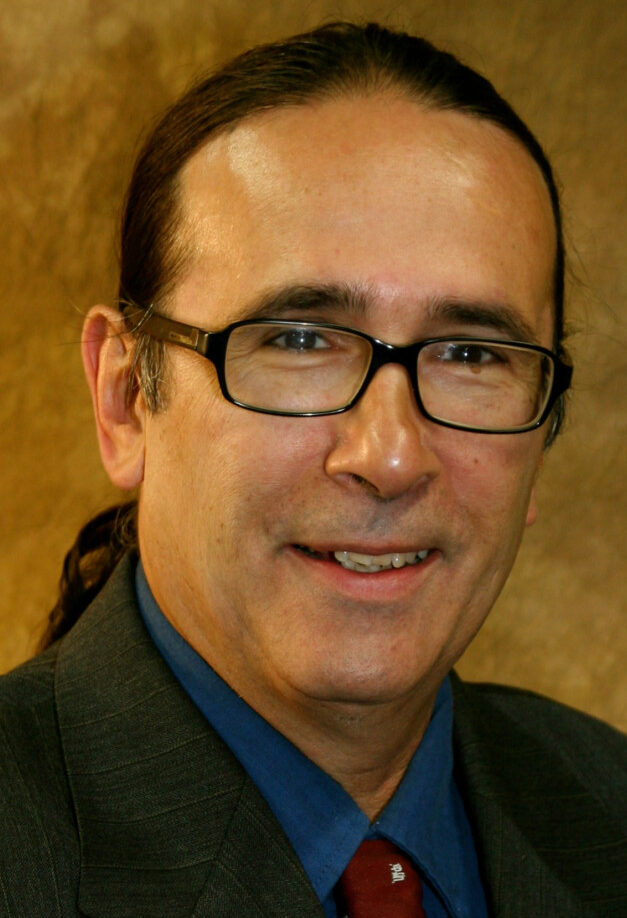 In addition to the change in publishers, Paul DeMain (pictured), another prominent Native journalist, is stepping down from the Navajo Times board, Arviso wrote. “Paul has been the chairman of the board and is an original board member since we began operation as the Navajo Times Publishing Company Inc. on Jan. 1, 2004.
In addition to the change in publishers, Paul DeMain (pictured), another prominent Native journalist, is stepping down from the Navajo Times board, Arviso wrote. “Paul has been the chairman of the board and is an original board member since we began operation as the Navajo Times Publishing Company Inc. on Jan. 1, 2004.
DeMain, Ojibwa/Chippewa from Wisconsin, “is the owner of Indian Country Communications Inc. and is the former publisher of News From Indian Country. He has a long award-winning career in Native American journalism and media. Paul has been a strong leader on our board and his professional contributions and personal wit will be missed.”
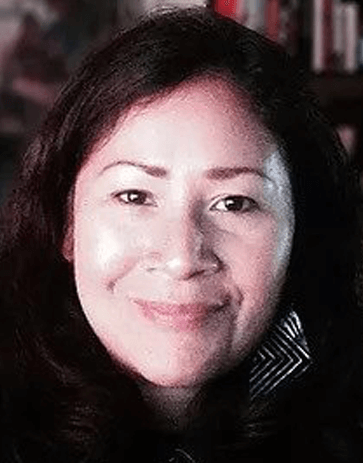 DeMain is to be succeeded by Kimberly Baca (pictured), Navajo/Santa Clara, president and CEO of her own marketing communications company, KB Consulting, based in Albuquerque. N.M.
DeMain is to be succeeded by Kimberly Baca (pictured), Navajo/Santa Clara, president and CEO of her own marketing communications company, KB Consulting, based in Albuquerque. N.M.
Benally, the incoming publisher, told reporter Krista Allen, “We’ve seen the decline in the subscribers and in the readership. But I’m always reminded that we are a unique newspaper that touches a lot of different people.
“From a high of 24,000 in circulation in 2012, the newspaper is steady at 11,500 today.
Allen also wrote, “She’ll become a crucial steward of Diné journalism at a time of widespread mistrust in the media and readers increasingly turning to online news sources.”
‘I Need People With Big Hearts to Help Me’
Alan Whitt, who some know as a news editor at ESPN, a manager in the sports sections of the Detroit News or the Tennessean, or a colleague at the Orlando Sentinel or Democrat and Chronicle in Rochester, N.Y., is appealing for help.
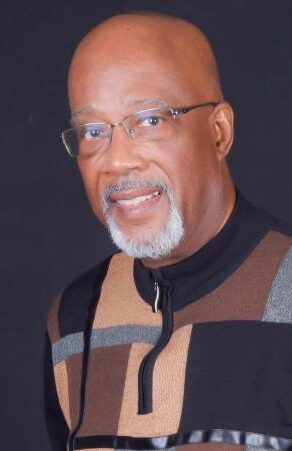 “I didn’t want to do this. My goal was to keep my situation private, sharing it with only a few people close to me … until I had won the battle. But I need upwards of $12,000,” Whitt (pictured), who most recently ran a travel service with his wife, Gloria, writes on GoFundMe.
“I didn’t want to do this. My goal was to keep my situation private, sharing it with only a few people close to me … until I had won the battle. But I need upwards of $12,000,” Whitt (pictured), who most recently ran a travel service with his wife, Gloria, writes on GoFundMe.
“The truth is I am not well. And I need help. I found out five weeks ago that I need a heart/kidney transplant. Yep, sounded scary to me too. Fortunately, I got word today that they have a match!
“Hi, my name is Alan Whitt, some of you know me, others don’t.
“I first found out I had congestive heart failure back in 2009 on a trip to Las Vegas. My kidneys began to fail in 2015. It’s been up and down since then, but most people had no idea I was going through this. I look healthy on the outside but …
“In the last two years I’ve had one heart attack and two pacemaker/defibrillators planted in my chest … the second after the first went off five times in a 24-hour period.
“Obviously things weren’t getting better. Through seven surgeries and multiple procedures since 2018 my kidneys suffered due to the trauma and mixture of drugs used to help me. I’ve had two stints in cardiac rehab and was scheduled to hit the trifecta in the next few weeks.
“I’ve learned a lot about transplants since February 21, and I’m confident I’m going to get the double transplant in a timely fashion. I hate someone has to die for me to live, but I promise whoever my donor is I will make the most of this life-saving blessing. . . .”
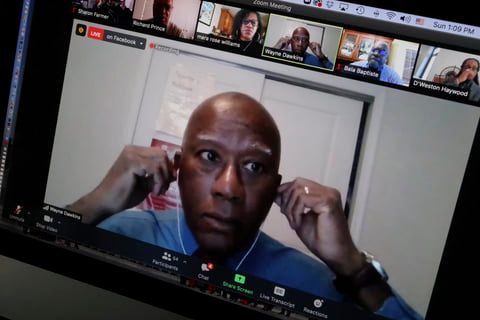
With this season’s recognition, I will continue to teach, coach and inspire student talent.” (Photo by Sharon Farmer/sfphotoworks)
Nominate a J-Educator Who Promotes Diversity
Beginning in 1990, the Association of Opinion Journalists, now part of the News Leaders Association, annually granted a Barry Bingham Sr. Fellowship — actually an award — “in recognition of an educator’s outstanding efforts to encourage minority students in the field of journalism.”
Since 2000, the recipient has been awarded an honorarium of $1,000 to be used to “further work in progress or begin a new project.”
Past winners include James Hawkins, Florida A&M University (1990); Larry Kaggwa, Howard University (1992); Ben Holman, University of Maryland (1996); Linda Jones, Roosevelt University, Chicago (1998); Ramon Chavez, University of Colorado, Boulder (1999); Erna Smith, San Francisco State (2000); Joseph Selden, Penn State University (2001); Cheryl Smith, Paul Quinn College (2002); Rose Richard, Marquette University (2003).
Also, Leara D. Rhodes, University of Georgia (2004); Denny McAuliffe, University of Montana (2005); Pearl Stewart, Black College Wire (2006); Valerie White, Florida A&M University (2007); Phillip Dixon, Howard University (2008); Bruce DePyssler, North Carolina Central University (2009); Sree Sreenivasan, Columbia University (2010); Yvonne Latty, New York University (2011); Michelle Johnson, Boston University (2012); Vanessa Shelton, University of Iowa (2013); William Drummond, University of California at Berkeley (2014); Julian Rodriguez of the University of Texas at Arlington (2015); David G. Armstrong, Georgia State University (2016); Gerald Jordan, University of Arkansas (2017), Bill Celis, University of Southern California (2018); Laura Castañeda, University of Southern California (2019); Mei-Ling Hopgood, Northwestern University (2020); and Wayne Dawkins, Morgan State University (2021).
An awards luncheon is planned to celebrate Dawkins and winners in other categories on May 20 at the News Leaders Association’s Journalism Unplugged Hybrid Conference in Nashville. The speaker for the event is Sally Buzbee, executive editor at The Washington Post. More information.
Nominations may be emailed to Richard Prince, Opinion Journalism Committee, richardprince (at) hotmail.com. The deadline is May 27. Please use that address only for NLA matters.
To subscribe at no cost, please send an email to journal-isms+subscribe@groups.io and say who you are.
Facebook users: “Like” “Richard Prince’s Journal-isms” on Facebook.
Follow Richard Prince on Twitter @princeeditor
Richard Prince’s Journal-isms originates from Washington. It began in print before most of us knew what the internet was, and it would like to be referred to as a “column.” Any views expressed in the column are those of the person or organization quoted and not those of any other entity. Send tips, comments and concerns to Richard Prince at journal-isms+owner@
View previous columns (after Feb. 13, 2016).
View previous columns (before Feb. 13, 2016)
- Diversity’s Greatest Hits, 2018 (Jan. 4, 2019)
- Book Notes: Is Taking a Knee Really All That? (Dec. 20, 2018)
- Book Notes: Challenging ’45’ and Proudly Telling the Story (Dec. 18, 2018)
- Book Notes: Get Down With the Legends! (Dec. 11, 2018)
- Journalist Richard Prince w/Joe Madison (Sirius XM, April 18, 2018) (podcast)
- Richard Prince (journalist) (Wikipedia entry)
- February 2018 Podcast: Richard “Dick” Prince on the need for newsroom diversity (Gabriel Greschler, Student Press Law Center, Feb. 26, 2018)
- Diversity’s Greatest Hits, 2017 — Where Will They Take Us in the Year Ahead?
- Book Notes: Best Sellers, Uncovered Treasures, Overlooked History (Dec. 19, 2017)
- An advocate for diversity in the media is still pressing for representation, (Courtland Milloy, Washington Post, Nov. 28, 2017)
- Morgan Global Journalism Review: Journal-isms Journeys On (Aug. 31, 2017)
- Diversity’s Greatest Hits, 2016
- Book Notes: 16 Writers Dish About ‘Chelle,’ the First Lady
- Book Notes: From Coretta to Barack, and in Search of the Godfather
- Journal-isms’ Richard Prince Wants Your Ideas (FishbowlDC, Feb. 26, 2016)
- “JOURNAL-ISMS” IS LATEST TO BEAR BRUNT OF INDUSTRY’S ECONOMIC WOES (Feb. 19, 2016)
- Richard Prince with Charlayne Hunter-Gault, “PBS NewsHour,” “What stagnant diversity means for America’s newsrooms” (Dec. 15, 2015)
- Book Notes: Journalists Follow Their Passions
- Book Notes: Journalists Who Rocked Their World
- Book Notes: Hands Up! Read This!
- Book Notes: New Cosby Bio Looks Like a Best-Seller
- Journo-diversity advocate turns attention to Ezra Klein project (Erik Wemple, Washington Post, March 5, 2014)
When you shop @AmazonSmile, Amazon will make a donation to Journal-Isms Inc. https://t.co/OFkE3Gu0eK
— Richard Prince (@princeeditor) March 16, 2018

